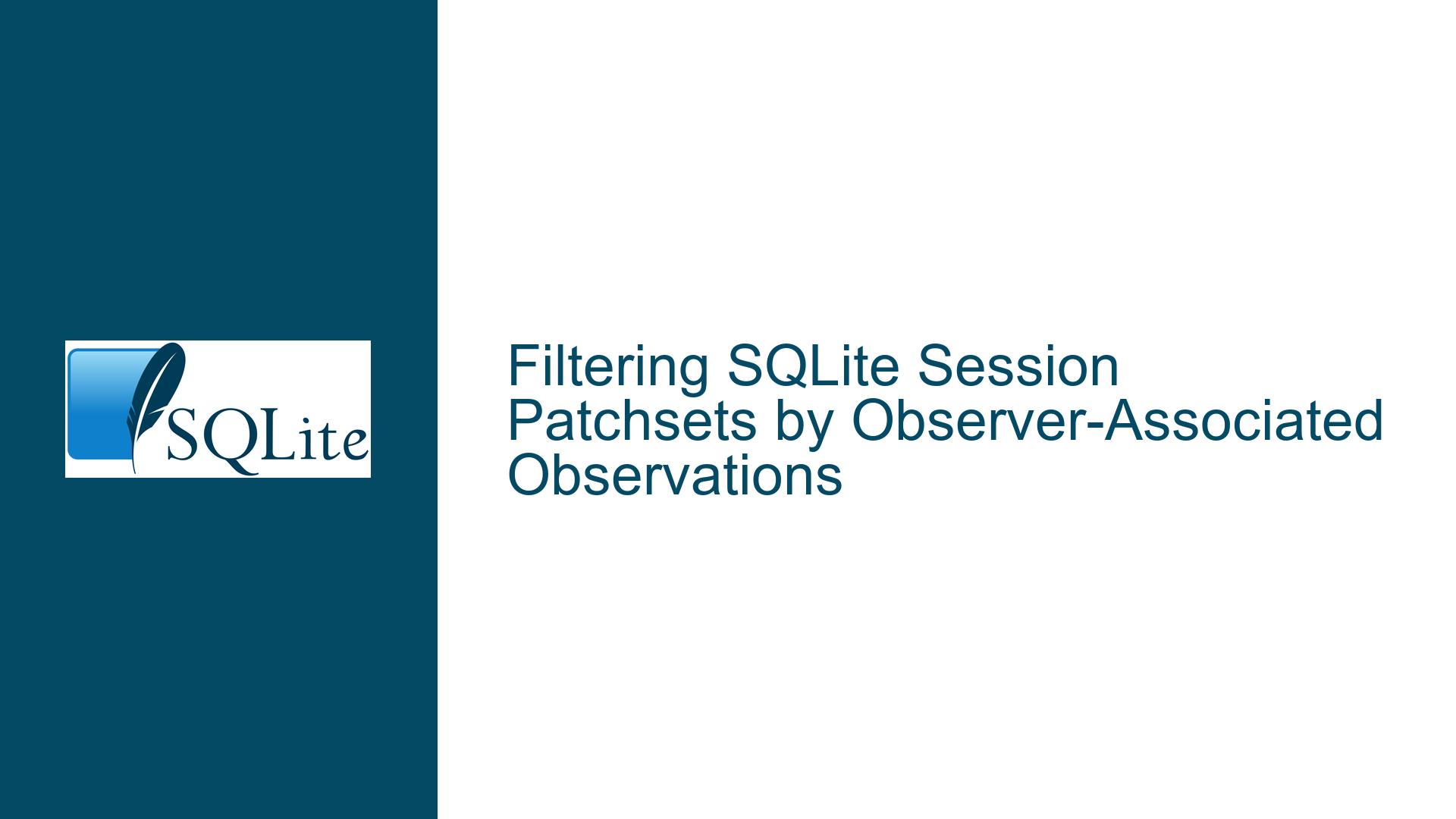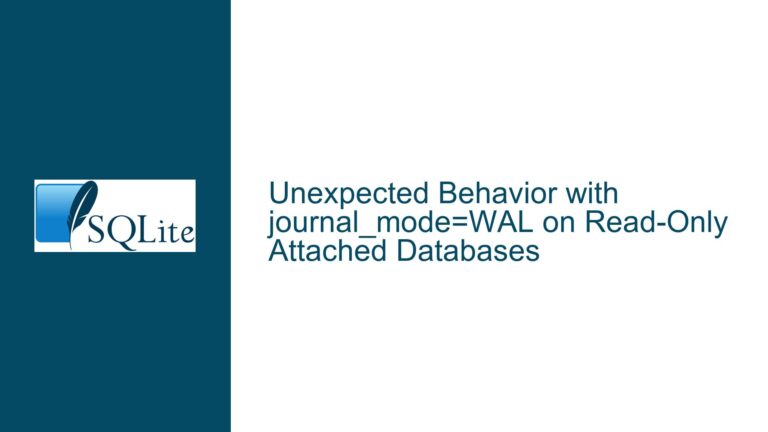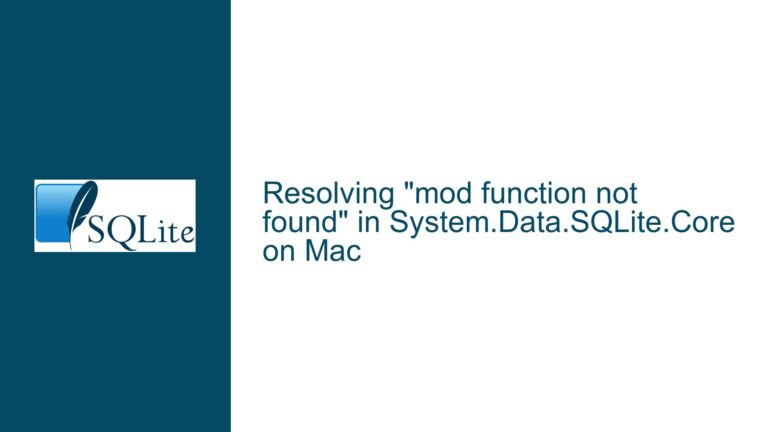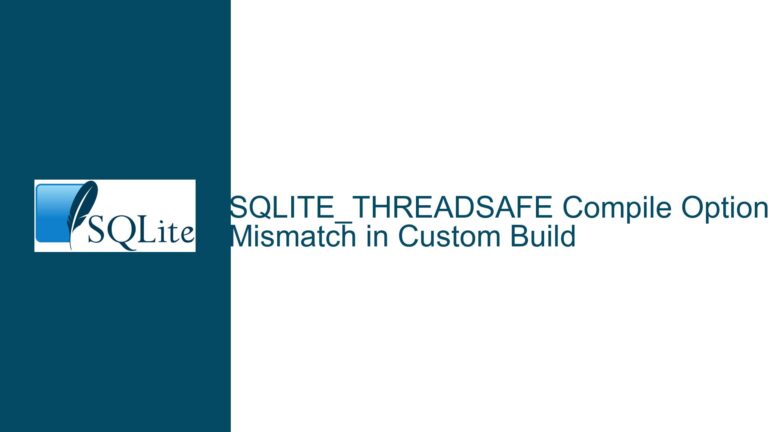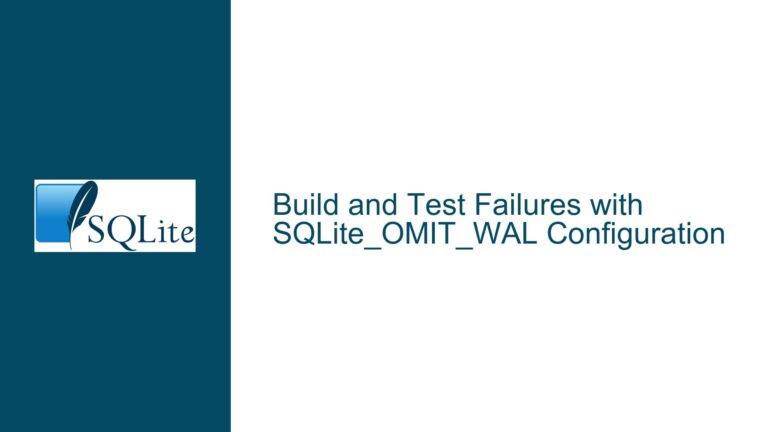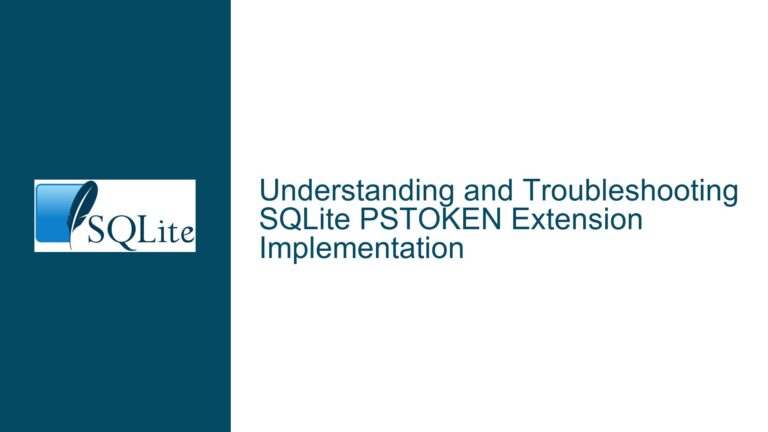Filtering SQLite Session Patchsets by Observer-Associated Observations
Capturing Observer-Specific Data Changes via Session Extension Filtering
Issue Overview: Generating Targeted Patchsets for Observer-Associated Observations
The core challenge involves creating filtered SQLite session extension patchsets that exclusively contain changes relevant to specific observers based on their associated observations. The database schema includes three tables: observer (stores observers), observation (stores observed data), and observer_observation (a junction table linking observers to observations). The goal is to capture changes to the observation table and filter them such that each observer receives only changes tied to their associated observations. This requires reconciling two distinct datasets:
- Change Tracking via Sessions: The SQLite session extension natively captures row-level changes (inserts, updates, deletes) in monitored tables.
- Observer-Observation Associations: The
observer_observationjunction table defines which observers "subscribe" to specific observations.
The complexity arises from the need to dynamically correlate session-captured changes with observer associations. A naive implementation might capture all changes to the observation table and filter them post-hoc, but this risks data leakage or incomplete filtering. Instead, the solution must integrate association checks during the patchset generation process to ensure each observer’s patchset contains only permitted changes.
Key technical hurdles include:
- State Synchronization: Observer-observation associations may change during the session’s lifetime (e.g., new links added via
observer_observationinserts). These changes must be reflected in real-time filtering logic. - Primary Key Extraction: Correctly identifying the
observation_idfrom session change data, even when operations modify non-primary-key columns. - Changegroup Management: Efficiently segregating changes into observer-specific groups without duplicating data or introducing overhead.
Possible Causes of Filtering Inaccuracies or Patchset Generation Failures
Incomplete Table Attachment
Failing to attach both theobservationandobserver_observationtables to the session object. If theobserver_observationtable is not tracked, association changes (inserts/deletes) will not trigger updates to the filtering logic, leading to stale or incorrect observer mappings.Misaligned Primary Key Handling
Incorrectly extracting theobservation_idfrom session change data. For example, usingsqlite3changeset_oldinstead ofsqlite3changeset_newfor insert operations or mishandling composite keys in theobserver_observationtable.Race Conditions in Association State
Processingobservationtable changes beforeobserver_observationchanges within the same session. For example, an observation update occurring before a linking entry is added toobserver_observationwould not be attributed to the observer unless the filtering logic accounts for temporal ordering.Unmanaged Changegroup Lifetime
Improperly initializing or destroyingsqlite3changegroupobjects, leading to memory leaks or corrupted patchsets. Each observer’s changegroup must persist until all relevant changes are processed.Foreign Key Constraint Violations
Applying a filtered patchset to a target database that lacks required observer or observation entries, triggering foreign key errors. This underscores the need for transactional consistency when applying patchsets.
Troubleshooting Steps, Solutions & Fixes
Step 1: Session Initialization and Table Attachment
Begin by creating a session object and attaching all relevant tables. While the observer table may not require tracking (unless observer metadata changes are relevant), both observation and observer_observation must be monitored:
sqlite3session *pSession = NULL;
sqlite3session_create(db, "main", &pSession);
sqlite3session_attach(pSession, "observation");
sqlite3session_attach(pSession, "observer_observation");
Step 2: In-Memory Association State Management
Maintain a real-time lookup structure (e.g., a hash table) mapping observation_id values to sets of observer_id values. Initialize this structure by querying the observer_observation table at the session’s start to capture pre-existing associations:
// Pseudocode for initial state population
sqlite3_stmt *stmt;
sqlite3_prepare_v2(db, "SELECT observer_id, observation_id FROM observer_observation", -1, &stmt, NULL);
while (sqlite3_step(stmt) == SQLITE_ROW) {
int64_t observer_id = sqlite3_column_int64(stmt, 0);
int64_t observation_id = sqlite3_column_int64(stmt, 1);
add_association(observation_id, observer_id); // Adds to the in-memory map
}
sqlite3_finalize(stmt);
Step 3: Iterating Through the Changeset
Extract the raw patchset from the session and iterate through each change using sqlite3changeset_start and sqlite3changeset_next. For each change:
- Identify the Affected Table: Use
sqlite3changeset_opto determine if the change applies toobservationorobserver_observation. - Extract Primary Keys: For
observationchanges, extractobservation_idviasqlite3changeset_pk. Forobserver_observationchanges, extract bothobserver_idandobservation_id.
Step 4: Dynamic Association State Updates
When processing observer_observation changes, update the in-memory map immediately:
if (strcmp(table_name, "observer_observation") == 0) {
int64_t observer_id = /* extract from old/new values based on operation type */;
int64_t observation_id = /* extract similarly */;
if (op_type == SQLITE_INSERT) {
add_association(observation_id, observer_id);
} else if (op_type == SQLITE_DELETE) {
remove_association(observation_id, observer_id);
}
}
Step 5: Filtering Observation Changes
For observation table changes, query the in-memory map to determine which observers are currently associated with the modified observation_id. Add the change to all relevant observers’ changegroups:
if (strcmp(table_name, "observation") == 0) {
int64_t observation_id = /* extract via sqlite3changeset_pk */;
ObserverSet *observers = get_associated_observers(observation_id);
for (each observer_id in observers) {
sqlite3changegroup_add(pChangegroup[observer_id], ...);
}
}
Step 6: Outputting Filtered Patchsets
After processing all changes, serialize each observer’s changegroup into a patchset:
for (each observer_id in observers) {
void *pPatchset = NULL;
int nPatchset = 0;
sqlite3changegroup_output(pChangegroup[observer_id], &pPatchset, &nPatchset);
// Store or transmit pPatchset
}
Step 7: Handling Edge Cases and Optimizations
- Composite Key Extraction: For
observer_observationchanges, usesqlite3changeset_oldandsqlite3changeset_newwith column indices corresponding toobserver_idandobservation_id. - Concurrency Control: Use
BEGIN IMMEDIATEtransactions when querying initial association states to prevent mid-snapshot modifications. - Indexed Lookups: Ensure the
observer_observationtable has indexes on bothobserver_idandobservation_idto accelerate in-memory map population.
Final Validation
Test the solution against scenarios such as:
- An observer linked to an observation after the observation is modified.
- An observer unlinked from an observation before subsequent modifications.
- Batch inserts/deletes in
observer_observationaffecting multiple observers.
By adhering to these steps, the generated patchsets will accurately reflect observer-specific changes while maintaining referential integrity and performance efficiency.
